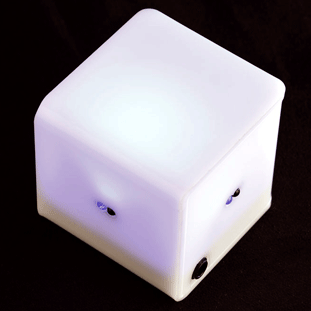Percussa’s AudioCubes are wireless smart blocks for sound design, composition, live performance, music education and music app development.

They can sense your fingers and hands as well as each other’s location and orientation. They have built in RGB lighting for visual feedback.
Shaping sounds in this fashion is much more intuitive than using knobs: rather than thinking about the particular setting a sound parameter should have, you can concentrate on the quality and timbre of the sound as you manipulate the sound, via MIDI, using your hands and fingers.
Using Arduino, you’ll be able to control an analog synthesizer that use CV signals to modulate parameters like oscillator frequency, filter cutoff, or an amplitude envelope.

Details here.
Via [Percussa, Matrixsynth]










